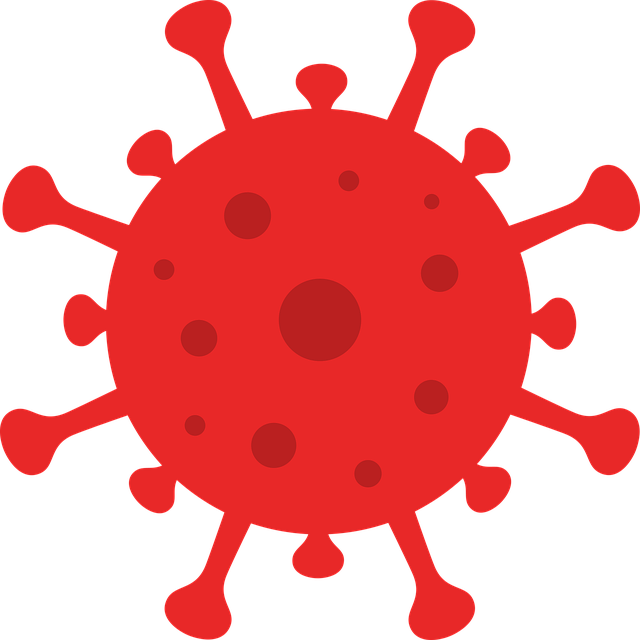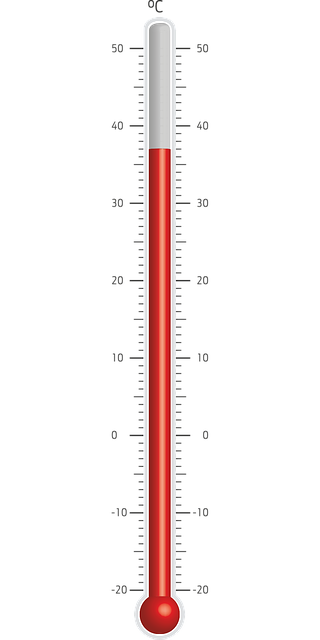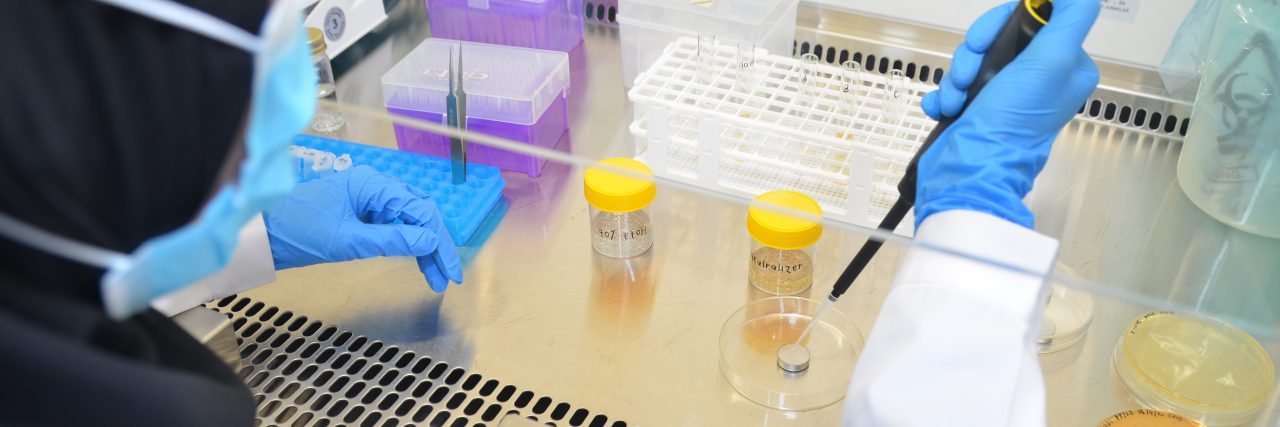Disinfection is an essential practice of preserving hygiene and preventing the spread of microorganism via surfaces, medical instruments, and more that could lead to harmful diseases. Disinfection is critical in the areas of human medicine, veterinary, and in the food, industrial, domestic and institutional areas. Are you wondering where can you find a one-read document that covers all testing requirements of these three areas?
Which better guide to read than EN 14885, a globally implemented norm that illustrates the European Standards most suitable in the respective areas. EN 14885 encapsulates efficacy test methods for disinfectants used for human hygiene in the medical area, surfaces and or vehicles for the housing or transportation of animals and the equipment, production, storage of food for humans and animals.
These methods share the same principle of a dilution-neutralization technique, yet are accustomed to the site of application, application method, soiling conditions and more. Have a glimpse below on the different factors associated to the test procedures in EN 14885.
| DIFFERENCES | AREAS | ||
| MEDICAL | VETERINARY | FOOD, INDUSTRIAL, DOMESTIC & INSTITUTIONAL | |
| Interfering substances | Clean condition: Bovine serum albumin Dirty condition: Bovine serum albumin + sheep blood |
Low-level soiling: Bovine serum albumin High-level soiling: Bovine serum albumin + yeast extract |
Clean condition: Bovine serum albumin Reconstituted skimmed milk Dirty condition: Bovine serum albumin Yeast extract Reconstituted skimmed milk Sucrose Sodium dodecyl sulphate |
| Obligatory test organisms | Bacteria: Enterococcus hirae, Enterococcus faecium, Escherichia coli K12, Pseudomonas aeruginosa, Staphylococcus aureus Yeast/fungi: Aspergillus brasiliensis, Candida albicans Viruses: Poliovirus, adenovirus, murine norovirus, vaccinia virus, parvovirus Mycobacteria: Mycobacterium avium, Mycobacterium terrae Bacterial spore: Bacillus subtilis, Bacillus cereus, Clostridium difficile |
Bacteria: Enterococcus hirae, Escherichia coli, Proteus vulgaris, Pseudomonas aeruginosa, Staphylococcus aureus, Streptococcus uberis Yeast/fungi: Aspergillus brasiliensis, Candida albicans Viruses: Bovine enterovirus (ECBO) Mycobacteria: Mycobacterium avium |
Bacteria: Enterococcus hirae, Escherichia coli, Pseudomonas aeruginosa, Staphylococcus aureus Yeast/fungi: Aspergillus brasiliensis, Candida albicans Bacteriophage: Lactococcus bacteriophage P001, Lactococcus bacteriophage P008 Bacterial spore: Bacillus subtilis, Clostridium sporogenes |
| Temperature | Hand & surgical hygiene: 20 °C Instrument disinfectants: 20 to 70 °C Surface disinfectants: 4 to 30 °C |
Surface disinfectants: 5 to 40 °C Teat disinfectants: 20 to 30°C |
Surface disinfectants: 20 and/or 40 °C or 10 and/or 20°C |
| Surface texture | Non-porous only | Non-porous and porous | Non-porous only |
Interfering Substances
 “Clean before product application.” – Have you encountered such statement on a disinfectant label before? This statement often means that the product has undergone clean condition testing—the addition of a small amount of bovine serum albumin during the test. Interfering substances mimic real-life organic matter that are present on surfaces or the human skin and may include blood, urine, dust, food particles, fats, and oils and more. They are mandatory and are commonly referred as clean condition, dirty condition, low-level soiling, or high-level soiling depending on the area of application. Interfering substances often lower the efficacy of a disinfectant, therefore identifying the suitable testing condition for your product according to product application site and exposure is essential. A tip from the European Regulators: manufacturers with a product claim of a combined 2-in-1 action of cleaning and disinfection should opt for dirty condition during your test request.
“Clean before product application.” – Have you encountered such statement on a disinfectant label before? This statement often means that the product has undergone clean condition testing—the addition of a small amount of bovine serum albumin during the test. Interfering substances mimic real-life organic matter that are present on surfaces or the human skin and may include blood, urine, dust, food particles, fats, and oils and more. They are mandatory and are commonly referred as clean condition, dirty condition, low-level soiling, or high-level soiling depending on the area of application. Interfering substances often lower the efficacy of a disinfectant, therefore identifying the suitable testing condition for your product according to product application site and exposure is essential. A tip from the European Regulators: manufacturers with a product claim of a combined 2-in-1 action of cleaning and disinfection should opt for dirty condition during your test request.
Obligatory Test Organisms
“Effective against human coronavirus.” – The target organisms in European Standards are representative species specifically relevant to the![]() area of interest and product use. These group of organisms are not meant to be claimed specifically on product labels as they represent a larger
area of interest and product use. These group of organisms are not meant to be claimed specifically on product labels as they represent a larger group of microorganisms as well. Ideally, the general grouping of microorganisms such as anti-bacterial, anti-fungal, and anti-tuberculocidal should be used. Specific claims towards human coronavirus and others should only be made upon testing against the specific strain, i.e. Human coronavirus 229E. Within these standards are set minimum requirements of test organisms that a product should be tested against. Find out the suitable minimum requirement of your product here today or glance through our microorganism library to hand-pick your target organism.
group of microorganisms as well. Ideally, the general grouping of microorganisms such as anti-bacterial, anti-fungal, and anti-tuberculocidal should be used. Specific claims towards human coronavirus and others should only be made upon testing against the specific strain, i.e. Human coronavirus 229E. Within these standards are set minimum requirements of test organisms that a product should be tested against. Find out the suitable minimum requirement of your product here today or glance through our microorganism library to hand-pick your target organism.
Temperature
 “Store at room temperature and avoid direct sunlight exposure.” – These temperature precaution statements on disinfectant labels do contribute to the effectiveness of the product. Given our understanding on exponential growth, some disinfectants work better when exposed at a higher temperature, but this may vary according to the active substance used in these products. In these European Standards, products are encouraged to be tested within the temperature of the surrounding area of application. Disinfectants applied under high temperature are also tested with a minimum requirement of a temperature and microorganism. For instance, instrument disinfectants that are used at a temperature above 40 °C are to be tested at a minimum of 40 °C with Enterococcus faecium, a heat-resistant bacteria. Specific claims against heat-resistant microorganisms may be a key point in marketing your disinfectant in our current market, however, these claims are required to be supported with efficacy test reports against the desired targeted microbial strain.
“Store at room temperature and avoid direct sunlight exposure.” – These temperature precaution statements on disinfectant labels do contribute to the effectiveness of the product. Given our understanding on exponential growth, some disinfectants work better when exposed at a higher temperature, but this may vary according to the active substance used in these products. In these European Standards, products are encouraged to be tested within the temperature of the surrounding area of application. Disinfectants applied under high temperature are also tested with a minimum requirement of a temperature and microorganism. For instance, instrument disinfectants that are used at a temperature above 40 °C are to be tested at a minimum of 40 °C with Enterococcus faecium, a heat-resistant bacteria. Specific claims against heat-resistant microorganisms may be a key point in marketing your disinfectant in our current market, however, these claims are required to be supported with efficacy test reports against the desired targeted microbial strain.
Surface Texture
“The tale of the vanishing cocci.” – In our previous blog, we have discussed the effects of surface porosity on the effectiveness of a disinfectant. Harmful germs tend to clump or seep through porous surfaces, making it harder to kill these microorganisms during disinfection. Specific European Standards are design to mimic real-life application of products onto porous surfaces such as wood. An important key to note would be the quantitative suspension tests (Phase 2, Step 1) and quantitative surface tests (Phase 2, Step 2) needed to be done in order to claim certain activity against hard surfaces.
There are multiple factors or conditions to consider when requesting an efficacy test. Let us assist you through your testing journey by guiding you throughout these factors and recommending a cost-effective approach for your next step. Contact us here to speak to one of our experts today!

